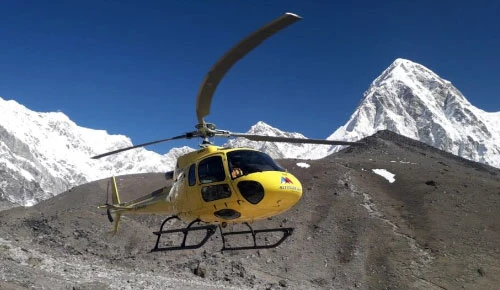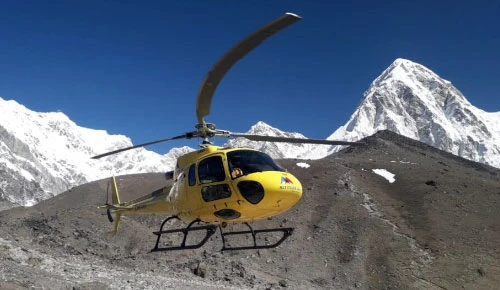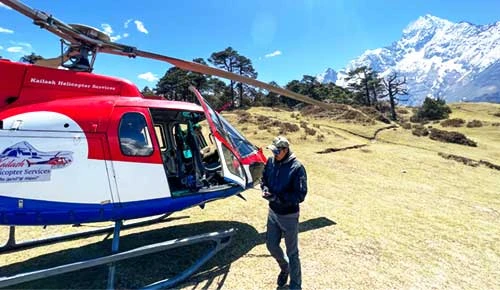Travel Insurance for Trekking In Nepal
It can be challenging, but picking the best travel insurance for Nepal is an important decision. Before starting any adventurous trips in Nepal, it is both required and strongly advised to purchase travel insurance.
For a trip in Nepal, nearly all trekking companies in both Nepal and your country will NEED to see proof of travel insurance, and they should. While trekking is typically a risk-free sport, all outdoor activities have some danger. Most importantly, your insurance coverage should cover helicopter evacuation as well as emergency medical and repatriation services. Before you travel to Nepal, Nepal Trek Adventure strongly advises you to contact your insurance provider and confirm the details. Verify the coverage of trekking and hiking in Nepal, as well as the altitudes. Make sure that any peak climbing that is part of your trek, including those requiring ropes and crampons, is covered.
All of our clients are encouraged to buy travel insurance that includes medical evacuation coverage and travel protection. When traveling at high altitudes in a remote area of the world where there are no other modes of transportation available, medical evacuation insurance is essential in case of the incidence of AMS (Acute Mountain Sickness) or for any other cause at high elevations. Similarly to this, it is strongly advised to purchase travel insurance to safeguard your travel investment against unexpected events that could arise before, during, or after your trip.
Before making a decision, it is recommended to carefully research the insurance and its coverages. Bring your insurance documentation with you on the trip, and leave a copy next to your family. You must make sure that your insurance covers you for the relevant activities and offers an acceptable degree of protection.
You can find some information and suggestions that may be helpful in planning your insurance before you set out on your adventure below.
Before anything else:
Ask your annual policy provider, home insurer, or current health insurance provider if they can provide you with a policy that covers the level of activity you are engaging in initially. These options are typically less expensive than purchasing new insurance.
Medical, Rescue, and Treatment:
Medical evacuation in remote locations without access to other forms of transportation can be quite expensive. All of our clients are required to carry insurance that includes emergency evacuation, medical care, and treatment. We firmly advise you to reconsider your own insurance and obtain full coverage if it does not offer these coverages. It's also important to know how much coverage you have and the conditions in which the medical insurance comes.
Travel security:
If you must cancel the trip after it has been confirmed, you risk losing the money you have already paid for it. Therefore, it is advised to have insurance with travel protection. Since things don't always go as expected, you might need to postpone or reschedule your travel because of unexpected events. Having these coverages provided by your insurance can be useful because all of the paid trip deposits are non-refundable in the event of any occurrences. The same goes for delayed or missed flights; however, your insurance will only provide assistance if the delay or missing flight was brought on by an insured event (Severe weather, natural disaster, strike). Please carefully study the policy terms as the insurance companies' interpretation of this coverage may vary.
Baggage lost or delayed:
Most travel insurance policies only provide coverage up to a particular monetary limit. Knowing your coverage limit is crucial, so please inquire with your insurance company about it.
Sports and Activities level:
Before making a purchase, it is strongly advised that you confirm with your insurance that it covers your level of activity, trip style, and elevation. Please make sure that it includes specific activities according to your travel preferences and the maximum height.
Limitation or Exclusion
Travel insurance features a number of exclusions, much like most insurance policies. Any specific events or items that your policy does not cover should be noted.
COVID-19:
Purchasing insurance that also covers costs associated with COVID-19 is highly advised.
Table of Contents
Several important things to consider when purchasing trekking insurance
- Pre-existing conditions must be converted to coverage under travel insurance within 15 days of making the first trip payment.
- Covid is covered by travel insurance in the same way that other illnesses are. Insurance, therefore, comes in if a person becomes ill prior to travel and is unable to travel. Alternatively, if they are traveling and become unwell and need to be quarantined, the hotel and other costs will be covered.
- You could purchase travel insurance that also covers airfare. Essentially all pre-paid costs.
- Insurance will pay for up to $50,000 in medical costs (with the option to upgrade to $100,000 for a small additional fee after pressing "purchase").
- It'll cover misplaced luggage
- Additionally, it will cover repatriation, or returning home in the event of an emergency while traveling (think broken back or even death)
- If travelers decide not to get trip cancellation and interruption insurance, the cost of the insurance is significantly reduced. If they do that, medical and baggage coverage will be offered, but no trip or flight costs will be covered.
Insurance Scams
Sadly, there has been an increase in insurance scams in Nepal during the past ten years. To put it simply, some less scrupulous trekking organizations have started collaborating with helicopter businesses to schedule pointless helicopter rescues, split the expensive helicopter bills, and therefore scam insurance companies.
For genuine trekking companies, who have to deal with the fallout from these scams, this has been a major problem. The cost of insurance has increased, and many insurance providers now outright refuse to cover treks to Nepal. Most also demand that all evacuations be approved in advance. This takes time and can be harmful in an emergency. In addition, many of these businesses are undercutting legitimate businesses by charging for trips at prices that would be unprofitable normally.
How to prevent yourself from scams:
If you want to make trekking a safe activity for everyone, it's critical that you work to stop these cheap knocks and take precautions to guard yourself when trekking in Nepal. You can take the following actions:
1) Ensure that the itinerary for your trip includes enough time for acclimatization.
It's probably too much if your trek requires multiple days of ascent of more than 300 meters (1,000 feet) without a few acclimatization days planned in the itinerary. Do not forget that you CANNOT finish the high-altitude trek in fewer days without significantly increasing your risk of altitude sickness unless you want to fly out on a helicopter during the trek. Your health is at risk, so you should think twice before continuing your trip with your guide or trekking company if they insist that you can complete it without proper acclimatization.
2) If the cost of your trip seems too good to be true, it most likely is.
The cost of the flight from Lukla to Kathmandu to Lukla for the Everest expedition is about US$ 390. Costs for food and housing per day range from $40 to $50 USD. Permits are $50 USD. Include the pay of the tour guides and porters as well as ground transportation, lodging, and other activities. Again, you should think twice before hiking with anyone that offers you an ALL-INCLUSIVE TREK like a 15-day trekking package to Everest Base Camp for less than US$1,000. They will need to recover that money in some way, and fraud like this is probably how they will do it.
3. You are your own best judge.
Small headaches are common. Minor stomach issues, a cough, and a sore throat are also present. These most likely don't necessitate a helicopter evacuation. Even though it would be challenging for most first-time trekkers to assess the severity of their altitude sickness, you can still notice when your guide is being forceful and insisting on a helicopter evacuation. Instead of paying for an expensive helicopter journey, the first line of treatment for most moderate episodes of altitude sickness should be waiting an extra day to acclimate or descend on foot. Only if you experience several of the signs and symptoms of altitude sickness should you demand a helicopter evacuation.
Some other basic preventions are:
- Never pay with cash
- Always ask the insurance agent for ID proof.
- Do Not Disclose Your Policy's Specifics
- Online insurance policy purchases
- Report the loss of a policy document right away.
- Don't Forget to Write Your Own Policy Documents
- Only give identity proofs to trusted personnel
- When transacting on public networks or through Internet kiosks, take caution




